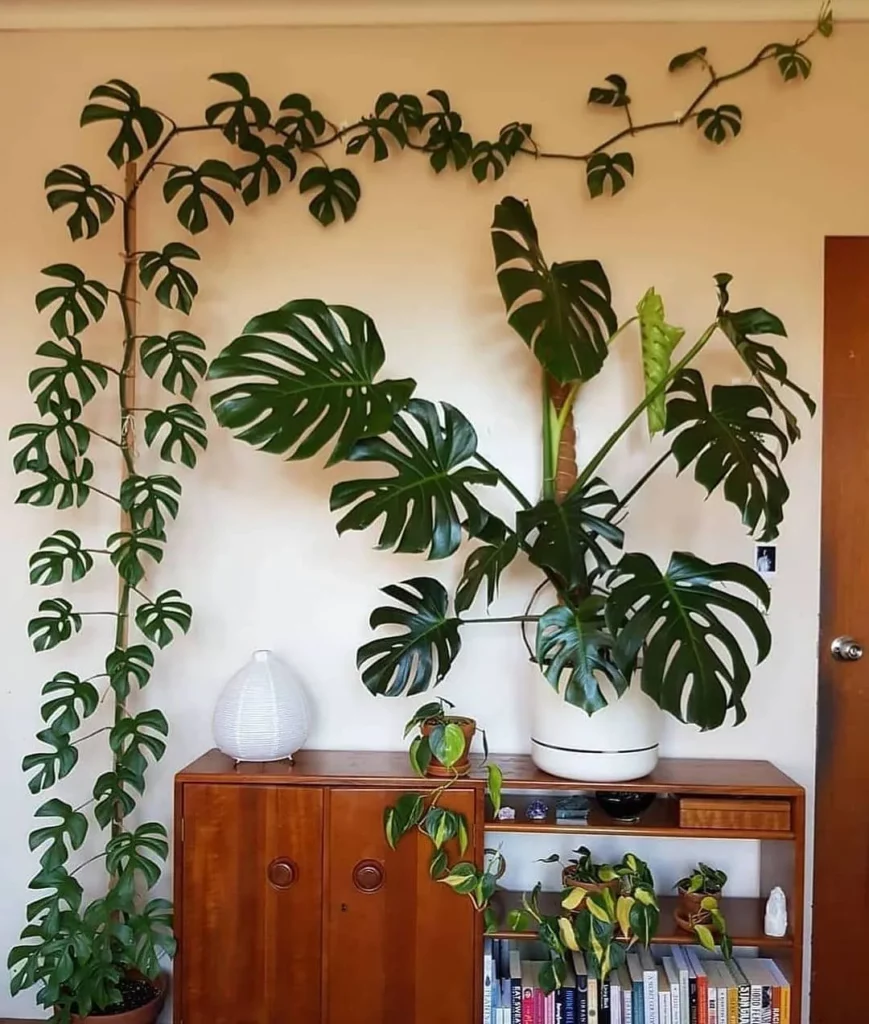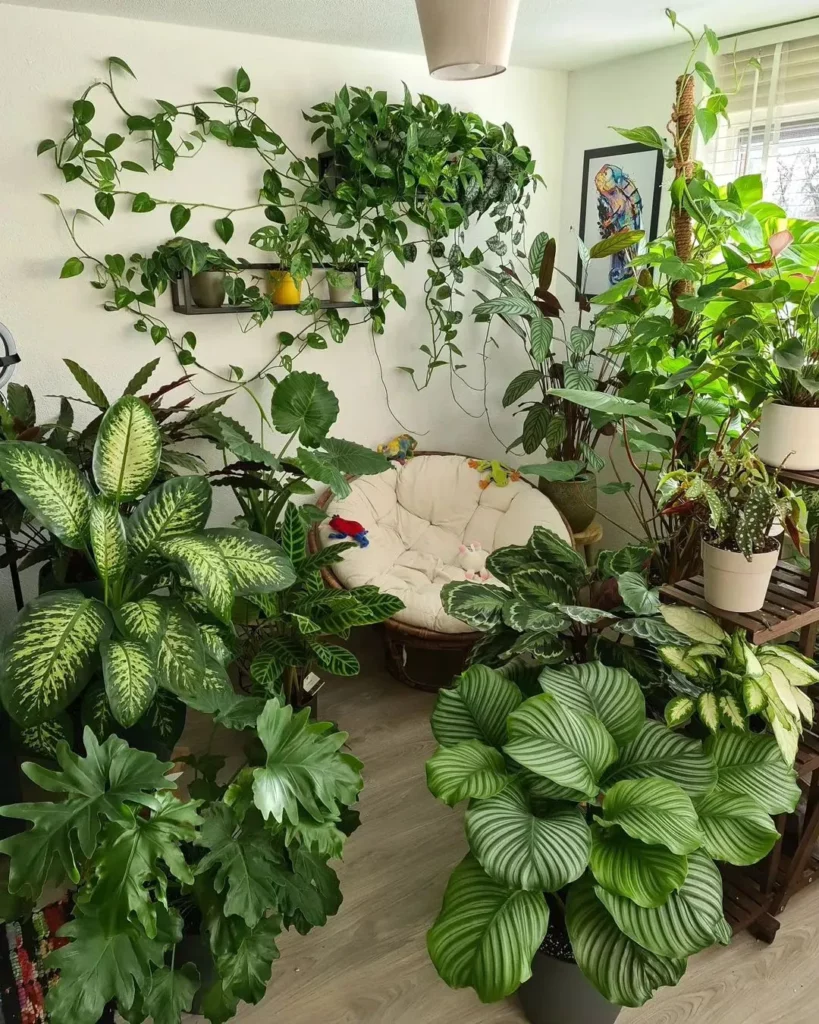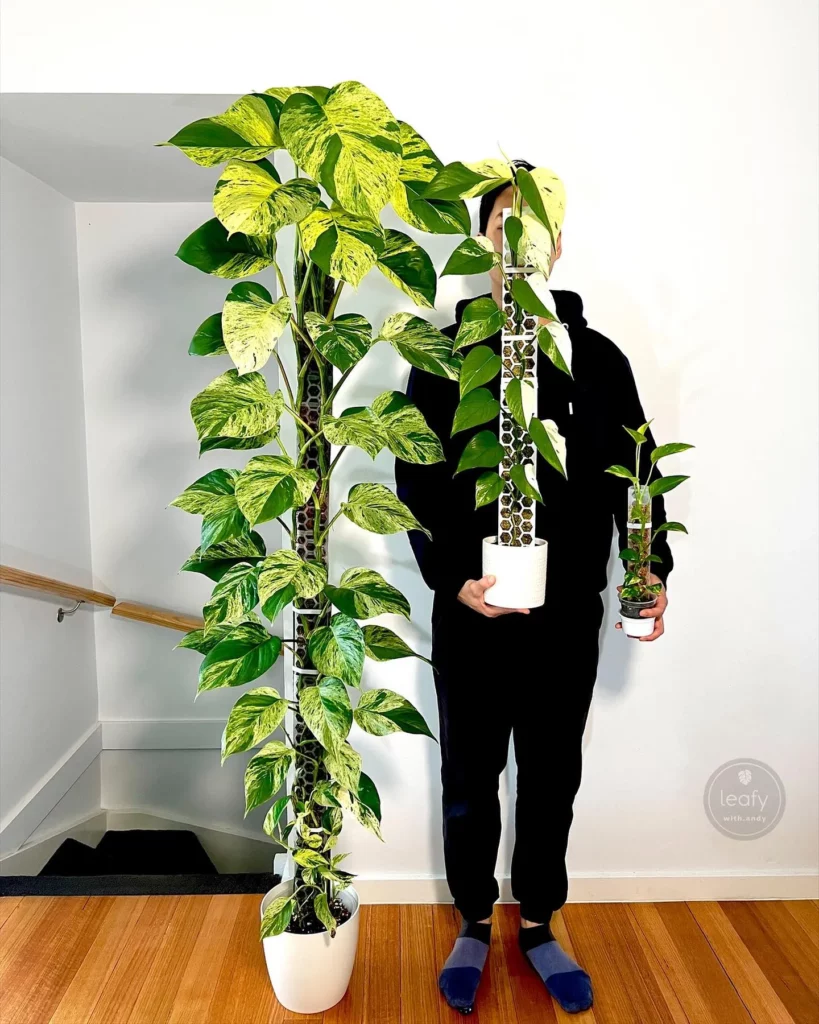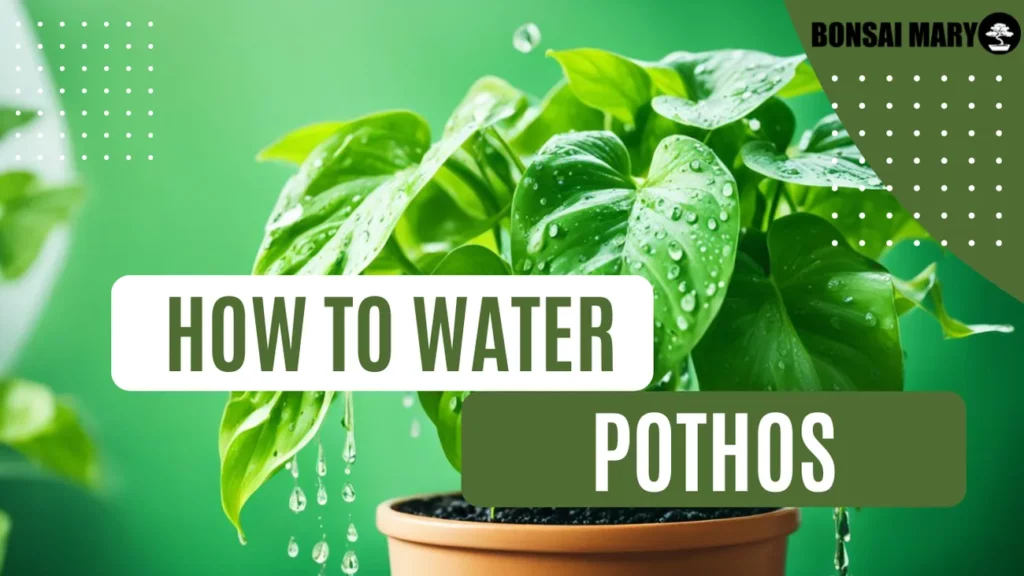Water pothos plants thoroughly when the top inch of soil becomes dry, typically every 1-2 weeks, avoiding waterlogged soil to prevent root rot.
Before you start watering your beloved pothos plant, it’s vital to grasp its specific watering requirements. This section will delve into the natural habitat of pothos plants and how it directly impacts their watering needs. By gaining a deep understanding of these needs, you can establish a solid foundation for maintaining the optimal moisture levels for your pothos.
No products found.
Creating the Right Watering Schedule



Setting up a consistent watering schedule is crucial for the health of your pothos plants. By developing a proper watering routine, you can ensure your plants receive adequate hydration without the risk of overwatering.
When creating a watering schedule for your pothos plant, several factors come into play:
- Plant size: Larger pothos plants generally require more frequent watering compared to smaller ones. As the plant grows, its water requirements increase to support its expanding foliage and root system.
- Potting medium: The type of potting medium used affects water retention. Well-draining soil allows excess moisture to escape, whereas moisture-retaining mediums may need less watering. Consider the composition and drainage capabilities of your potting mix when determining the watering schedule.
- Environmental conditions: Factors such as temperature, humidity, and light levels impact how quickly the soil dries out. In warmer environments or areas with increased airflow, the soil may dry out faster, necessitating more frequent watering.
To create the ideal watering routine, start by monitoring your pothos plant closely. Check the soil moisture levels regularly by inserting your finger about an inch deep into the soil. If it feels dry, it’s time to water your plant.
No products found.
It’s essential to strike a balance between providing enough water for your pothos plant’s needs and avoiding waterlogged soil. Overwatering can lead to root rot and other issues that can harm your plant’s overall health. To prevent this, water your pothos thoroughly but allow the excess water to drain out completely.
In addition to these considerations, it’s important to adjust the watering frequency based on seasonal changes. For example, during the warmer months, your pothos may require more frequent watering as evaporation rates increase. Conversely, during winter or cooler periods, reduce the watering frequency to prevent waterlogged roots.
Proper Watering Techniques

To ensure the health and vitality of your pothos plants, it’s crucial to master the art of proper watering. By employing the right techniques, you can prevent issues such as under or overwatering, allowing your pothos to thrive. Here are some essential tips and tricks for watering your pothos effectively:
No products found.
- Choose the Right Watering Method: When it comes to watering your pothos, there are a few options to consider. The most common methods include bottom watering (placing the pot in a tray of water) and top watering (watering from the top of the pot). Experiment with both methods to find what works best for your plant.
- Water Thoroughly: When watering your pothos, ensure that you thoroughly saturate the soil. This encourages deep root growth and ensures that the entire root system receives adequate moisture.
- Use Well-Draining Soil: Pothos plants prefer a well-draining potting mix to prevent waterlogging. Avoid dense or compacted soils, as they can lead to root rot. Look for a high-quality, well-draining potting mix specifically designed for houseplants.
- Monitor Moisture Levels: Regularly check the moisture levels of your pothos by inserting your finger about an inch into the soil. If it feels moist, hold off on watering. If it feels dry, it’s time to water your plant.
- Establish a Watering Schedule: While the frequency of watering will vary depending on factors such as temperature and humidity, establishing a consistent watering schedule is key. Aim to water your pothos when the soil begins to dry out, but before it becomes completely dry.
Signs of Underwatering and Overwatering



One of the key aspects of pothos plant care is understanding how to properly water your plants. Both underwatering and overwatering can have detrimental effects on the health and longevity of your pothos.
By being able to recognize the signs of these two extremes, you can adjust your watering practices to ensure optimal growth and well-being for your plants.
Signs of Underwatering
When your pothos is not receiving enough water, it will exhibit several telltale signs. These signs include:
- Wilting leaves that appear droopy and limp
- Dry soil that pulls away from the edges of the pot
- Yellowing or browning of the leaves
- Leaves that feel brittle or crunchy to the touch
- Slow growth or stunted development
Underwatering can occur when you consistently forget to water your pothos plants or when you fail to provide them with adequate moisture. If you notice any of these signs, it’s crucial to adjust your watering routine to prevent further damage.
Signs of Overwatering
Overwatering your pothos can be just as harmful as underwatering. When excess water accumulates in the soil and around the roots, it can lead to root rot and other issues. Look out for the following signs of overwatering:
- Wilting leaves that feel soft and mushy
- Yellowing leaves that may also have brown or black spots
- Roots that appear brown, slimy, or have a foul smell
- Mold or fungus growth on the soil surface
- The presence of pests such as gnats or other insects
Overwatering often occurs when you water your pothos too frequently or when the potting medium does not have adequate drainage. To prevent overwatering, it’s important to establish a proper watering routine and use well-draining soil.
Troubleshooting and Additional Watering Tips
Even with the best watering practices, issues can arise when caring for your beloved pothos plants. It’s important to be aware of common watering problems and have a plan in place to address them promptly. One of the most common issues is root rot, which occurs when the roots are consistently moist and deprived of oxygen.
To troubleshoot this problem, ensure your pothos is potted in well-draining soil and that the pot has drainage holes. If you suspect root rot, gently remove the plant from the pot, trim away any affected roots, and repot it in fresh soil.
Another problem you may encounter is wilting, which can be a sign of both underwatering or overwatering. To troubleshoot, check the moisture level of the soil by inserting your finger about an inch deep.
If the soil feels dry, your pothos may need additional watering. On the other hand, if the soil is consistently wet or soggy, you may be overwatering. Adjust your watering routine accordingly to provide the right amount of moisture for your plant’s specific needs.
Additionally, here are some additional watering tips to help you keep your pothos plants thriving. First, always use room-temperature water to avoid shocking the plant’s roots. If your tap water contains high levels of chlorine or other chemicals, let it sit out overnight before watering your pothos.
This will allow the chemicals to dissipate. Furthermore, consider using a moisture meter to accurately measure the moisture levels in the soil and determine when it’s time to water. Finally, remember that environmental factors such as temperature and humidity can also affect your plant’s watering needs, so be mindful of these variables.
FAQ
What is the natural habitat of pothos plants?
Pothos plants are native to the tropical rainforests of Southeast Asia. They thrive in high humidity and bright indirect light.
How often should I water my pothos?
The frequency of watering your pothos depends on several factors, including the size of the plant, the type of potting medium used, and the environmental conditions. As a general rule, allow the top inch of soil to dry out before watering again.
What is the best watering method for pothos plants?
The best watering method for pothos plants is the bottom-up approach. Place the pot in a tray filled with water and allow the roots to soak up the moisture. This helps prevent overwatering and promotes healthy root growth.
How can I ensure proper drainage for my pothos plants?
To ensure proper drainage for your pothos plants, choose a well-draining potting mix and a pot with drainage holes. This allows excess water to escape, preventing waterlogged soil and potential root rot.
What are the signs of underwatering my pothos?
Signs of underwatering in pothos plants include wilting leaves, dry soil, and yellowing of the lower leaves. If the plant exhibits these symptoms, it’s time to water it thoroughly.
How can I tell if my pothos is overwatered?
Overwatered pothos plants may display symptoms such as yellowing leaves, root rot, a foul odor coming from the soil, and a mushy or soft texture in the roots. Adjusting your watering practices and allowing the soil to dry out can help revive the plant.
What should I do if my pothos plant develops root rot?
If your pothos plant develops root rot, it’s important to take immediate action. Remove the affected parts of the roots and repot the plant in fresh, well-draining soil. Adjust your watering practices to prevent further damage.
Can I use tap water to water my pothos?
Tap water can be used for watering pothos plants, but it may contain chemicals such as chlorine or fluoride that can accumulate in the soil over time. To minimize potential damage, it’s recommended to use filtered or distilled water.






Thank you so much for the help with watering my photos. I’ve had it for about a year it’s beautiful but I always worry about watering. Thanks to you I now know and hope my gal stays beautiful 😍
Hi my name is Rick,I have bin growing bonsai for at least 30 years. I like tropical trees Ficus I have many varieties,I also have larg Ficus trees and many others I have a small jungle in my house. I wanted to tell you that you plant are beautiful.